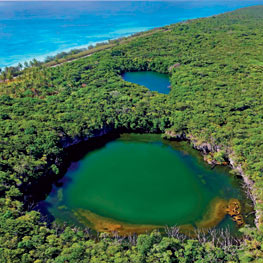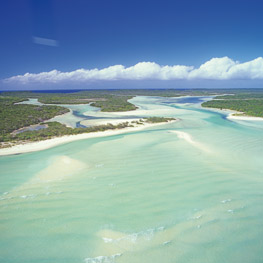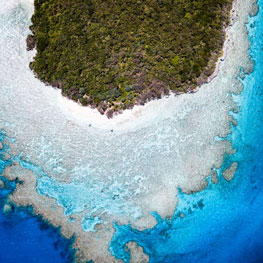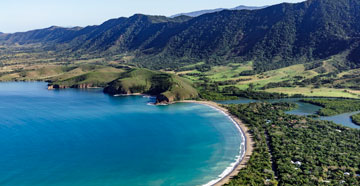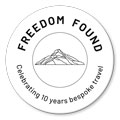Set like a jewel in the midst of the crystal waters of the Pacific, Ouvéa, New Caledonia, a UNESCO World Heritage site, boasts more than its fair share of picture-perfect landscapes. Beyond its soft white sand beaches, the atoll is largely preserved from urban modernity, allowing guests to focus on the simpler things in life. As you explore this spectacular corner of the archipelago, it’ll become clear why Ouvéa is more than worthy of its nickname, the closest island to paradise you’ll find.
In the 1970s, Katsura Morimura, a young Japanese writer, certainly made no mistake in her description of Ouvéa, New Caledonia. Seduced by the beauty of the island and the warm welcome she received, she titled her novel The Island the Closest to Paradise. This literary work narrates the romantic love story between a young Japanese woman and a local man. Although the writer has since passed away, the legacy of the work describing Ouvéa has survived. Young Japanese people, whether they’ve read the book or seen the movie of the same name, have a very special affection for the island. Some even make their way to New Caledonia for their honeymoon!
One of the most beautiful atolls in the South Pacific
At just 35 km in length, and only 40 metres wide in some places, Ouvéa definitely isn’t the largest island in the archipelago. However, what Ouvéa island may lack in size, it certainly makes up for in natural beauty and charm.
Every year, Fayaoué Beach, a 25 km stretch of immaculate white sand, welcomes visitors from across the globe. Bordered by clear, bright waters, and stretching from Mouli in the south to St Joseph in the north, the west coast of the island offers unforgettable views out across the lagoon. With such an incredible expanse of untouched coastline to explore, it’s easy to feel like you’re the only one on the island.
Find the perfect spot to lay down your beach towel beneath the warm Pacific sun, slip on a snorkel and spend time discovering the remarkable creatures that live below the water’s surface, or simply take a moment or two to truly soak up your surrounds. However you choose to spend your day, every day on Ouvéa is nothing short of incredible.
Just a short flight from Nouméa, it’s easy to add a visit to Ouvéa into any New Caledonia holiday itinerary. Visit for a day, enjoy a lazy long weekend or take your time discovering this gorgeous corner of the archipelago.
- Tourism office in Iaai
- Opening hours: Monday to Thursday : 7h30 - 16h30, and Friday : 7h30 - 15h30
- Telephone: + 687 45 10 84
- Email: si.iaai@canl.nc

On Ouvéa, two languages coexist - Iaaï, a Kanak language, and Faga-Uvea, a dialect that’s of Polynesian origin. Many of the ancestors of Ouvéa’s locals originated from across Polynesia and Melanesia, resulting in a unique blend of cultures and a strong Polynesian influence across the island. From place names to cultural traditions, it’s easy to see how Ouvéa stands out from its neighbours.
Discover the must-sees in Ouvéa
Voir plusHanawa Blue Hole
If the reputation of Ouvéa rest foremost upon its huge beach of white sand stretching over nearly 25 km, there is no need leaving the atoll without visitin...
Read moreShark nursery
Undoubtedly, it is not the cosiest place in Ouvéa but the shark nursery at the northern end of the island and the walk that leads to it are part of indispe...
Read moreTop things to do in Ouvéa
World-famous diving sites
Surrounded by beautiful turquoise waters, it really comes as no surprise that Ouvéa is home to some great diving sites. In Mouli, sea turtles, eagle rays and other marine species enchant divers below the surface. Be aware, though, that swimming in Lekiny Bay is forbidden as it is protected as a traditional reserve. Swimming is, however, permitted west of Mouli Bridge, but the current can be very strong! To the north of Ouvéa, the Pleiades and the Beautemps-Beaupré islands abound with world-famous diving spots. Explore this corner of New Caledonia with a local guide as every islet belongs to a local clan and coutume (the custom of gift giving) is mandatory for access to the areas. From the great visibility of Taurus pass to the renowned Styx pass, located near the Metouaine islet, the incredible diving spots surrounding Ouvéa are simply unmissable.










